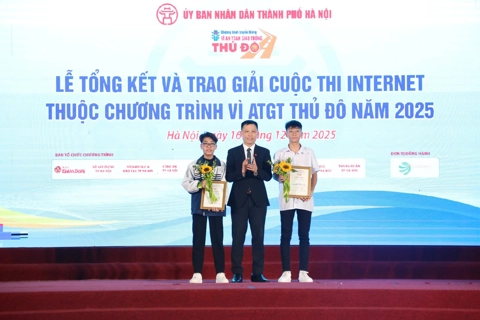Vietnam to implement first child-centered Juvenile Justice Law in 2026
Vietnam has taken a major step toward child-centered justice with the adoption of the Juvenile Justice Law, a landmark outcome of four years of international cooperation aimed at strengthening protections for children across the criminal justice system.
18 Dec, 10:18 AMVietnam marks 25 years of ILO Convention commitment in labor law enforcement
Marking 25 years since ratifying ILO Convention No. 182, Vietnam and its international partners reaffirmed their commitment to harness labor law enforcement, particularly ending child labor amid remaining challenges.
17 Dec, 08:28 PM15-year campaign builds a safer, more responsible traffic culture across Hanoi
After 15 years, a long-running traffic safety campaign continues to shape safer behavior and shared responsibility on Hanoi’s streets.
16 Dec, 09:28 PMBorder soldiers walk alongside children on Lai Chau’s hardships to school
In Vietnam’s northern border highlands, many children begin their school day hours before sunrise, walking dangerous mountain paths to reach class. Behind their perseverance stands quiet, long-term support from border soldiers, teachers and local authorities.
15 Dec, 07:33 PMPM requests emergency in house rebuilding for flood-hit residents
The Government leader has called the mission a mandate from the heart, urging all authorities to act as a moral commitment to the people.
14 Dec, 08:25 PMTwo-tier local government model strengthens Hanoi’s efforts to end urban flooding
Associate Professor Nguyen Hong Tien analyzes why Hanoi still faces chronic flooding, explains weaknesses in drainage planning and implementation and outlines how the two-tier local government model can support long-term solutions.
10 Dec, 03:00 PMPetroVietnam advances nationwide STEM classrooms to drive innovation and future talent
PetroVietnam expands its STEM Innovation program to develop high-quality classrooms and strengthen Vietnam’s future workforce in science, technology and innovation.
07 Dec, 07:44 PMVietnam Happy Fest 2025 spreads joy through simple things
The Vietnam Happy Fest 2025 honors the idea that joy comes from everyday moments and Vietnamese smiles, sharing a spirit of happiness with the world.
07 Dec, 07:27 PM








